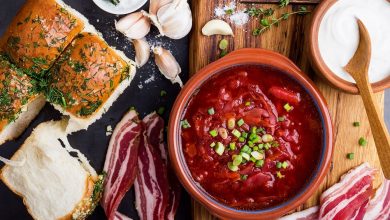Ten Russian delicacies to remember
A Google search for “Russian local products” and “Russian delicacies” will not give you any information at all. No matter how much you juggle words, there will be no result. It would seem that apart from the mythical black caviar at exorbitant prices, Russian cuisine has nothing more to be proud of.
Today, the Russian product is a forgotten concept. After the scarce Soviet times, foreign products seemed like a panacea, a ticket to a better open global world.
Now, few people will remember the taste of a wild pear or turnip. Nevertheless, today the time has come when it is no longer possible to ignore the lack of Russian delicacies and not think about local products. Foreign products during the embargo must find a worthy replacement.
Let’s walk through the rich assortment of products from Russia together. Believe me, you will be pleasantly surprised.
1. Fresh fish and seafood
It is time to remember that not only Mediterranean sea bream and Norwegian salmon are tasty.
Trepang. This mollusk is little known today outside the Far East, since fishing in the 2000s was significantly limited. In Korea and China, trepang is eaten alive, while in the Far East it is usually boiled like octopus to keep the meat from becoming tough.

Hairy crabs and bears. In Vladivostok, hairy crab and a bear crab are also mined – a type of prickly shrimp with a meat that is denser in structure.
In the hairy crab, the liver is valued. The Japanese boil it upside down in sea water to keep its shape, and carefully open the shell. In the empty half they put the liver, meat from the phalanxes and a little rice, then everything is mixed and eaten directly from the shell
Stroganina from chiral. Chirr stroganina smells of frost, ice-hole, pure spruce forest and fresh snow. This fish has a very strong taste.
Sea fox. Outwardly, this fish looks like a stingray, found in the Black Sea. In Crimea, it is simply fried and served. Sometimes it is cooked under a marinade with carrots, tomatoes and onions.
White Sea mussels. Mediterranean mussels are more affordable than those harvested and grown in the White Sea. But the taste of these mussels is an order of magnitude higher – in the White Sea, the water is much cleaner than in European reservoirs.
2. Dried, salted and smoked fish
Dried fish can be considered a real traditional Russian product, incomprehensible to most foreigners. Chekhov, silver bream, roach, blue bream, perch, flounder, gobies, smelt – a small list of river and lake fish that are caught and dried in the summer.
The choice of salted Russian fish is impressive: spicy salted mackerel, salted Baikal omul, White Sea herring, Onega whitefish, sockeye salmon, brook trout. Salted fish is an affordable product. Nevertheless, many types of fish that can be salted are considered delicacy.
3. Caviar
Black Astrakhan caviar is a symbol of the wealth of Russian royal cuisine. The most famous caviar is the legendary pressed caviar of the wild Russian sturgeon. Its preparation is a laborious process, including salting, pressing and drying. The result is a homogeneous mass with a delicate low-salt taste, a characteristic light bitterness and a unique aroma.
During the production process, caviar loses excess moisture, the mass of the finished delicacy is no more than 60% of the initial mass of caviar.

That is why pressed caviar is an extremely expensive product, and only a few Russian and foreign manufacturers make this delicacy following the traditional recipe. Unfortunately, after the collapse of the Soviet Union, the price of caviar became so high that it became unaffordable for the majority of the Russian population.
Nevertheless, the capital’s chefs say that venison, horse meat, nutria and musk deer meat are the future hits of high Russian gastronomy.
There are also many useful micro and macro elements in venison. The use of dishes from this type of meat improves the functioning of the heart, strengthens blood vessels.
helps maintain ideal weight, and stimulates the functioning of sexual functions. Among gourmets of all European countries, venison dishes are considered a real delicacy. Fresh reindeer meat is not easy to find, it is much easier to find it in salted, smoked or fresh-frozen form.
4f. Mushrooms
Wild mushrooms stewed, dried and salted have always been considered a delicacy. The most expensive mushroom is rightfully considered the porcini mushroom. Dried porcini mushrooms are a great alternative to European mushrooms that have already disappeared from store shelves.
For each type of mushroom there are optimal cooking methods.
Chanterelles are great for frying, stewing, cooking vegetable casseroles, mushroom soup and pastry toppings.
Milk mushrooms and mushrooms, for example, are salted in oak barrels.
To make the famous Vyatka mushrooms, mushrooms are sorted, washed and salted in oak barrels, previously steamed with juniper infusion, or in enameled barrels. To keep mushrooms well, they are heavily salted. After a week, they are transferred to glass jars and closed with plastic lids.



